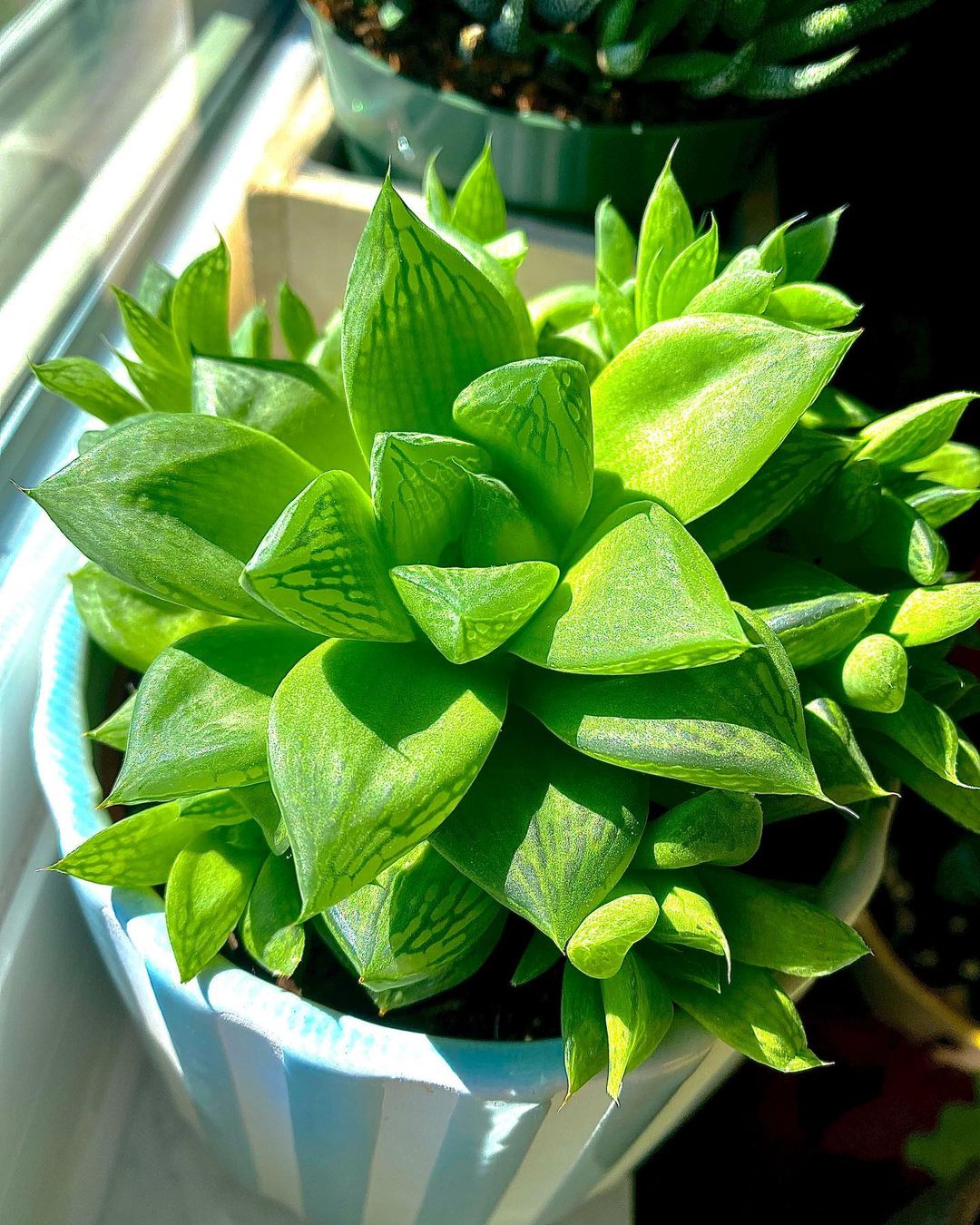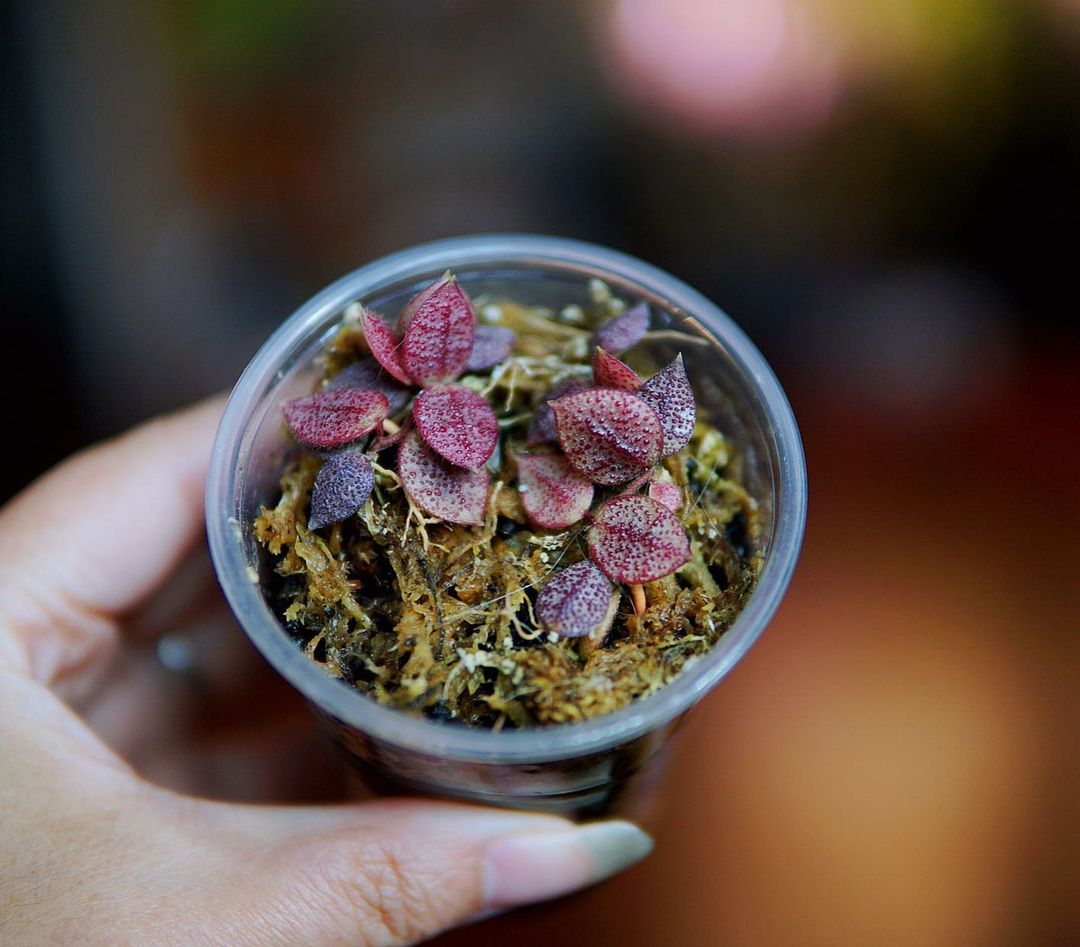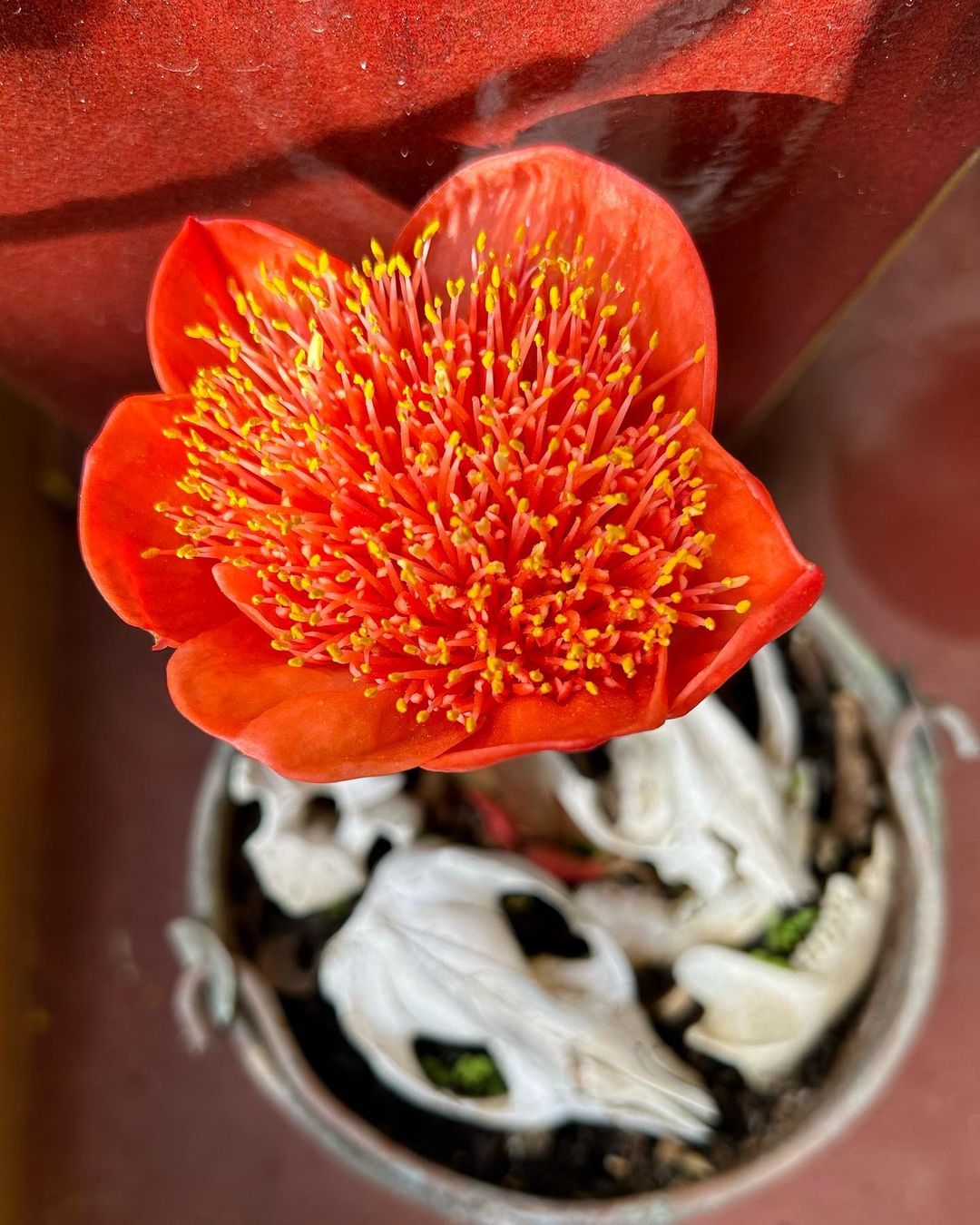This Haworthia Retusa Care guide will help you keep this succulent thriving in any setting and elevate the look of your indoor space.
Haworthia Retusa Care is not difficult; this beautiful succulent has minimal demands. It displays pretty, fat, transparent green leaves.
Common Names: Star Cactus, Window Succulent, Aloe retusa, Cushion Aloe
Botanical Name: Haworthia retusa
USDA Zones: 10a-11b
Find How to Grow String of Nickles
About Haworthia Retusa
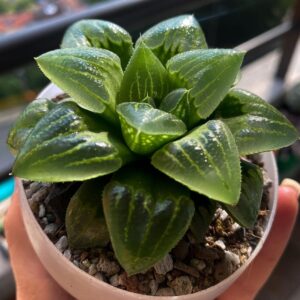
Haworthia retusa is a type of succulent from the small region near Riversdale in South Africa’s Western Cape Province. This plant grows in the shape of a star, forming small rosettes made up of thick, fleshy, lime-green, triangular, and recurved-shaped leaves. The tips of the leaves are translucent and marked with longitudinal lines, giving them a triangular appearance.
The flowers of Haworthia retusa are small, tubular, and white, patterned with green-brown veins that occur on unbranched flower stalks during late spring and summer.
Fact: The name “retusa” comes from the Latin word “retusus,” meaning “blunt or having a rounded apex,” which refers to the curved back shape of the leaves, similar to that of a thumb.
NOTE: Botanists find the translucent leaf tips of Haworthia retusa intriguing because they create small “windows” that allow light to pass through, illuminating the interior photosynthetic leaf areas.
Propagating Haworthia Retusa
Haworthia Retusa can be propagated by collecting offsets or leaf and stem cuttings. The simplest method is to remove the offsets when transplanting.
- To propagate offsets, gently remove the mother plant from the soil and use a sharp knife to cut the baby plants from the stem.
- Let the offsets dry overnight before placing them in a new container with potting soil similar to the one used for the mother plant.
- Keep the new plants in a warm, sunny location and water them regularly, allowing the soil to dry out between watering.
If you want to propagate Haworthia Retusa from leaf cuttings,
- Cut the leaf near the stem and let it dry overnight.
- Dip the cutting in the rooting hormone and place it in a separate pot near a window with indirect sunlight.
- Water the new plant regularly, but ensure that the soil dries out between watering.
Varieties, Cultivars, and Hybrids of Haworthia retusa
- Haworthia ‘Kegani’
- Haworthia retusa ‘White Ghost’
- Haworthia retusa var. nigra
Ideal Growing Conditions of Haworthia Retusa
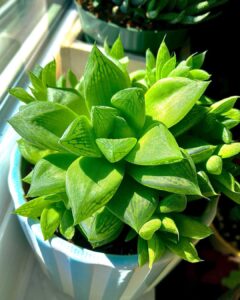
Location
While certain types of Haworthias can tolerate full sun exposure, most of them are well-suited to grow in partial shade. If you’re growing Haworthia retusa, then place the potted plant in a bright location that receives some protection from the strongest sunlight of the day.
Soil
It’s essential to avoid keeping Haworthia roots in overly damp conditions for extended periods. Therefore, it’s advisable to use a well-draining potting mix when growing Haworthia retusa. A commercially available succulent potting mix or cacti and succulent mix can be ideal options for this purpose.
Water
Caring for a haworthia retusa can be challenging, especially regarding watering. As with many succulents, overwatering is a common mistake that owners make. To avoid this, it’s important to let the soil dry out completely between watering sessions.
During the summer, it’s best to water the plant sparingly, while in the winter months, you can reduce the watering frequency to once every two months.
Temperature
Haworthia retusa is a succulent that originates from the dry regions of South Africa and is best suited for outdoor growth in USDA hardiness zones 9 to 11.
During the winter, this plant prefers cooler temperatures and enters a dormant phase in the summer months. It can withstand temperatures as low as 50°F during the colder season.
However, if you live outside of the recommended hardiness zones, it is advisable to grow Haworthia retusa indoors.
Learn about Silver Dollar Vine Care
Haworthia Retusa Care
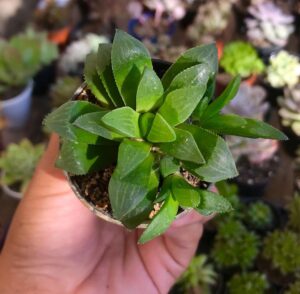
Fertilizer
Although Haworthia does not need frequent fertilization, it can promote optimal growth. During the active growing season, fertilize Haworthia Retusa with a diluted fertilizer for the best results.
It’s important to avoid over-fertilization, as it can harm the plant’s health.
Repotting
Although Haworthia retusa is a slow-growing succulent that can remain in the same pot for years, it’s important to repot it every two to three years to ensure optimal health. This allows the plant to receive fresh soil and adequate nutrients necessary for growth.
Pests and Diseases
Overwatering may cause root rot, which is the only problem that it may encounter.
If the plant’s leaves begin to yellow, it could be a sign of overwatering. In such cases, it is recommended to let the soil dry out and monitor the plant to see if the leaves turn green again.
Toxicity of Haworthia retusa
Haworthia species do not usually pose any toxicity risks to humans or animals.
Uses For Retusa Star Cactus
- Haworthia Retusa, the petite succulent plant, makes for an attractive display when grown in clusters in a spacious planter as a window plant.
- Combining it with other haworthia varieties having distinctively shaped leaves can further enhance its appeal.
- Although commonly cultivated alongside other plants, it can also thrive as a solo plant in unconventional vessels such as teacups or baby shoes.
Read about Graptosedum ‘Daruma Shu-rei’ Care

